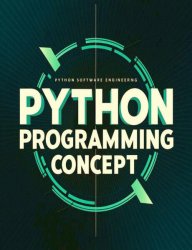Python Programming Concepts
- Добавил: literator
- Дата: 1-09-2024, 13:19
- Комментариев: 0
 Название: Python Programming Concepts
Название: Python Programming ConceptsАвтор: MRB, Mittul Bhatt
Издательство: Mittul Bhatt
Год: 2024
Страниц: 91
Язык: английский
Формат: pdf, azw3, epub, mobi
Размер: 10.1 MB
Python is a versatile, high-level programming language renowned for its simplicity and readability. It was created by Guido van Rossum and first released in 1991, making it one of the older programming languages still widely used today. Python's design philosophy emphasizes code readability with its clear and expressive syntax, making it an ideal language for both beginners and experienced developers alike.
Overall, Python's simplicity, versatility, and extensive ecosystem make it a popular choice for a wide range of applications, from scripting and automation to web development, scientific computing, and artificial intelligence. Its ease of learning and use, combined with its powerful features, have contributed to its widespread adoption and continued relevance in the programming community.
Features:
Readable and Expressive Syntax: Python's syntax is designed to be easy to read and write, resembling pseudo-code, which makes it particularly suitable for beginners and experienced programmers alike.
Interpreted Language: Python is an interpreted language, which means that code written in Python is executed line by line by the Python interpreter.
Dynamic Typing: Python uses dynamic typing, allowing variables to be declared without specifying their type explicitly. The type of a variable is determined at runtime.
Extensive Standard Library: Python comes with a vast standard library that provides modules and functions for a wide range of tasks, from file I/O to networking to web development.
High-level Language: Python abstracts away many low-level details, enabling developers to focus more on solving problems rather than managing memory or system resources.
Syntax: Python syntax is known for its simplicity and readability.
Скачать Python Programming Concepts
[related-news] [/related-news]
Внимание
Уважаемый посетитель, Вы зашли на сайт как незарегистрированный пользователь.
Мы рекомендуем Вам зарегистрироваться либо войти на сайт под своим именем.
Уважаемый посетитель, Вы зашли на сайт как незарегистрированный пользователь.
Мы рекомендуем Вам зарегистрироваться либо войти на сайт под своим именем.
